Storage Made Easy Review
Storage Made Easy let's you choose how to store files and with whom, an interesting new take on cloud storage. Though it's not without its faults, storage nerds (we don't judge) will probably love SME, even just to make life a little easier for themselves. Read our full Storage Made Easy review for the details.
Storage Made Easy (SME) takes a different approach than Dropbox, Google Drive and most of the services you’ll find in our reviews. Rather than provide its own cloud servers, SME can be used to connect to over fifty different cloud providers thanks to its File Fabric software.
That means you can sign up for a cloud IaaS service like Amazon S3 or Rackspace, connect it to SME, and turn it into a complete cloud storage solution capable of clearing up hard drive space, syncing files across devices and sharing files with others. Not only does that make SME comparable to many of the picks in our best cloud storage guide, that’s just the tip of the iceberg of what it can do.
Throughout the rest of this Storage Made Easy review, we run down all the key features, including security, plus take a look at the costs and basic user experience. If you’d like to see if SME makes sense as a cloud storage tool for you, you can try it before buying by signing up for a free personal plan or 14-day business trial.
Alternatives for Storage Made Easy
- 1$5 / month(All Plans)
- 2
Strengths & Weaknesses
Pros:
- Many cloud providers
- Private encryption
- Secure file sharing
- Network drive add-on
- WebDAV support
Cons:
- Sync feature costs extra
- Very limited support hours
Features
At the heart of Storage Made Easy is File Fabric, software designed to integrate with a cloud provider to create a complete cloud storage solution. At the time of this writing, File Fabric supports over fifty different connectors to both on-premise and on-cloud systems.
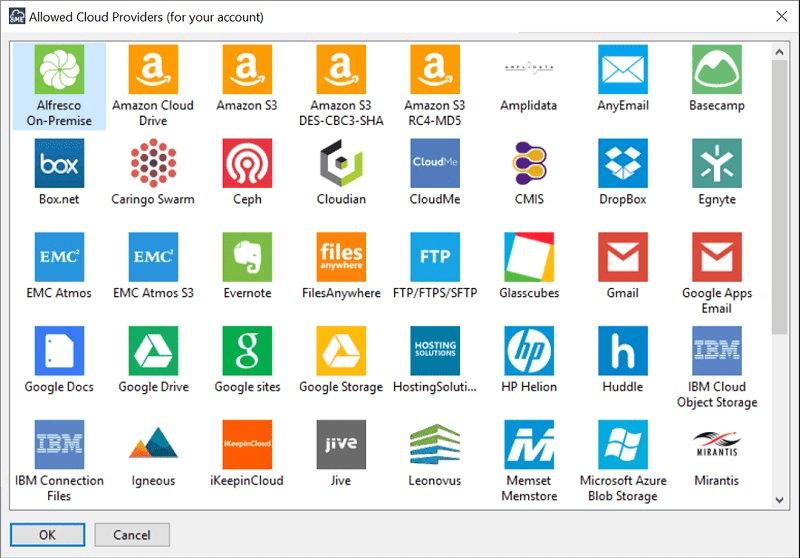
A few notable cloud providers are Amazon S3, Egnyte Connect, Dropbox, Google, Microsoft Azure and Rackspace.
Notably missing from the connector options is Backblaze B2, a low-cost cloud IaaS that we’re pretty fond of here at Cloudwards.net. However, SME does work with Wasabi, a newer hot storage entry with some of the best rates we’ve seen (check out our Wasabi review for more information.)
To facilitate working with files, SME offers a handful of desktop tools for Windows, Mac and Linux that integrates with File Fabric. Those tools include a free cloud explorer client to pull all of your cloud services together into one interface for easier management.
There are also network drive clients for some cloud providers as well as WebDAV support where a native network drive app isn’t available. Those features, like sync support, do come at an additional licensing cost on top of File Fabric, however (see pricing, below).
In addition to clients for Windows, MacOS and Linux, SME has free mobile apps for Android, iOS, Blackberry and Windows Phone. Of course, there’s also a web GUI to upload and access to files.
Sharing Files with Storage Made Easy
Storage Made Easy is about more than storing files. It also provides file sharing capabilities with vital security features like link passwords, expiry dates and download limits that are often missed by some of the bigger names in storage, including Google Drive. Dropfolders for collecting files from others is another key sharing feature we like.
To support collaboration, you can create groups and team folders, or revert back to previous file versions when collaborations go wrong. Deleted items are caught in a trash bin found in the file manager, too, so you can recover accidental deletions.
SME has an integration called CloudEdit that will let you open any file from the web GUI and edit using desktop software, following a download. CloudEdit will check the downloaded document every few seconds to see if it’s been edited and upload the changed document if it has.
While security is in part dependent on the company with which you decide to store your files (e.g., Amazon, Google, Microsoft), the SME software can be used to encrypt your files prior to upload, helping to secure them against unauthorized access and use. There’s an option for two-factor authentication to protect against stolen passwords as well.
We’ll look at many of these features in more detail later in this review to help you get a better feel for the overall SME product. First, however, let’s see how much it’s going to cost you.
Pricing
SME offers both personal or business cloud storage solutions. Both have a perpetual (lifetime) license available so that you’ll only have to pay for SME once, while businesses can also opt for a month-to-month subscription.
- One-time fee. Includes 5GB of free Amazon S3 storage.
- Includes 20GB of free Amazon S3 storage per user. 5 user minimum., total cost with minimum users is $25 a month.
- Includes 5GB of free Amazon S3 storage per user. 5 user minimum, total cost with minimum users is $300 a month.
Along with the use of the software, SME gives you a bit of free storage, too, which is hosted by Amazon S3. For personal and business perpetual licenses accounts, you get 5GB. For business subscriptions, you get 20GB per user, which can be distributed across the account anyhow you want.
Additional storage will cost you, of course, and that cost will depend on which cloud IaaS you choose to use. Rackspace Cloud Files, for example, costs around $1.00 per TB per month for storage, while Wasabi costs around $0.40 per month. Keep in mind, most cloud IaaS solutions also have small egress charges in addition to storage (Rackspace doesn’t).
If you want to stick with Amazon S3, you can increase your included storage directly through SME for a monthly fee. An additional gigabyte of storage costs $0.50 per month, however, which is nearly twice what you’d pay if you just set up S3 yourself (minus egress charges).
While SME’s basic desktop file manager client is free, network drive clients will cost you an additional $49 licensing fee. The same is true of the SME sync feature, which comes packaged with a $39 add-on.
Given that SME is quite a bit different in its business model than the usual cloud storage product, judging its relative value is a bit tricky.
For our part, we think the perpetual license is at least a reasonable bargain, even if we’re not quite ready to anoint it as one of the best deals in cloud storage. If the sync folder feature was included in the basic licensing cost, we might reconsider that stance.
If you’re looking for a budget-friendly business tool, check out Egnyte Connect for better month-to-month value (5TB of shared storage for $8 per user). We ranked it as the best cloud storage for business tool, overall.
Ease of Use
One thing we should be clear about right off the bat is that while a great idea, SME doesn’t feel quite as polished or user-friendly as most all-in-one solutions, like pCloud for example (see our pCloud review).
Still, the process of connecting to SME the cloud and managing files is relatively straightforward. You can either use a web GUI for this or download SME’s file management client.
Once you’ve signed up for service and set your credentials, you can log into the web to get things started. You’ll be presented with a handful of links to do things like adding a cloud provider, launch the file manager and download cloud apps.
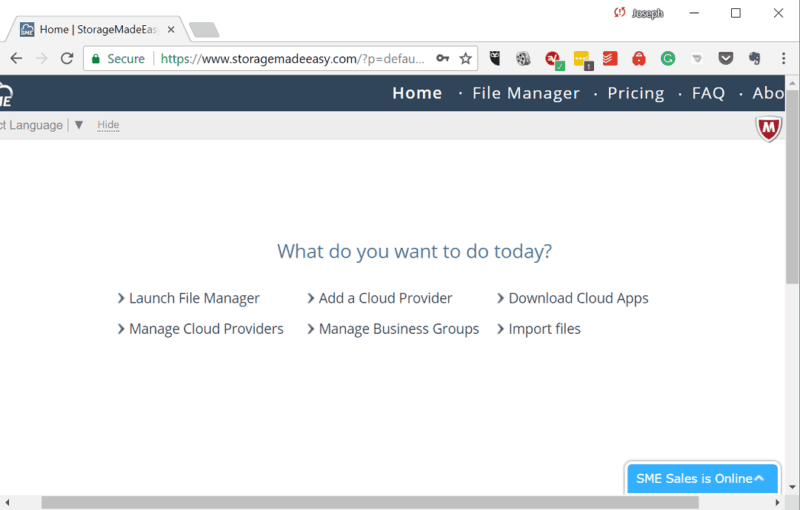
You’ll likely want to begin by connecting a cloud service, provided you’ve signed up for one. If not, you’ll need to head over to Rackspace or whatever service you want to use to set that up first. However, there should be an “SME” default option, too, which will give you access to the Amazon S3 space that SME includes with any license.
Adding a new service once you’ve signed up and copied the API key is easy. Click the “add a cloud provider” link and you’ll be presented with a drop-down menu to make your selection.
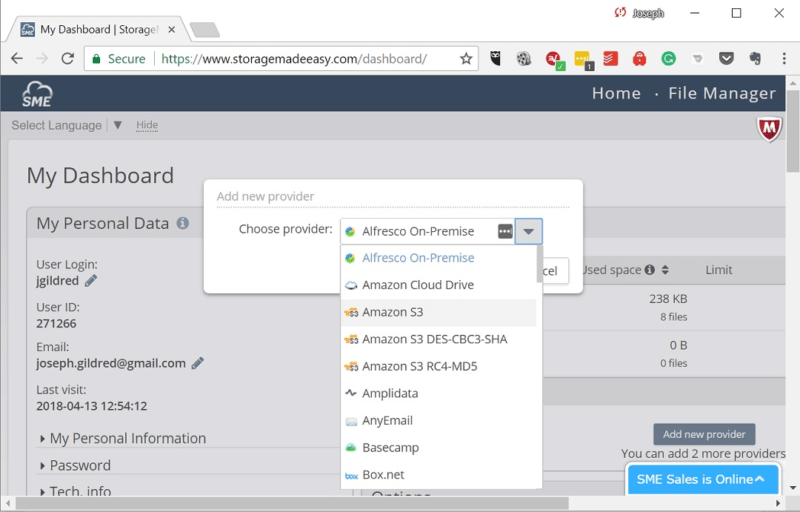
Once you find the one you want, click the “add provider” button. On the next screen, you’ll need to add connection details for that provider.
Connected, you can use the file manager to start uploading content.
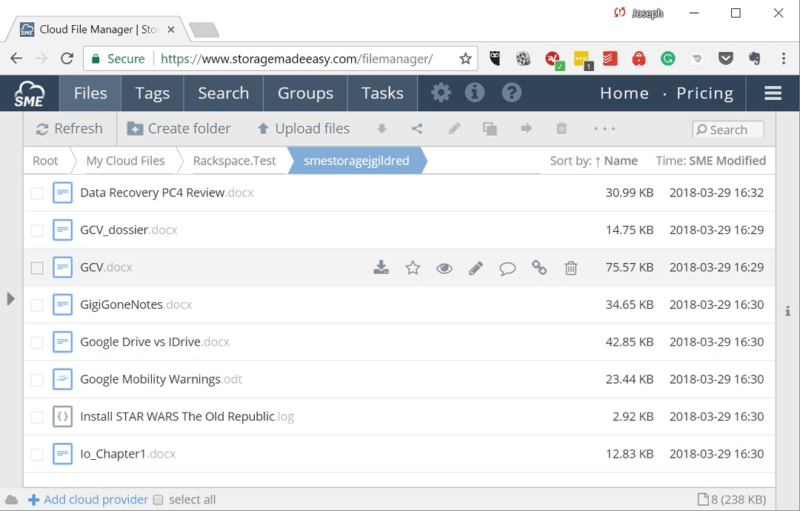
The “upload files” button near the top of the interface has both single file and batch options. You can also share files and create folders from there. There are also options for creating groups and assigning tasks, as well as searching uploaded content.
As mentioned earlier, Storage Made Easy has developed a handful of desktop and mobile tools to make working with files more easy. We won’t go through them all but will look at the cloud explorer client and network drive options.
SME Cloud Explorer
For those that prefer desktop over browser clients, Cloud Explorer lets you perform many of the same actions as the online interface, in addition to giving you access to cloud tools for mail backup, cloud sync and a WebDAV tool.
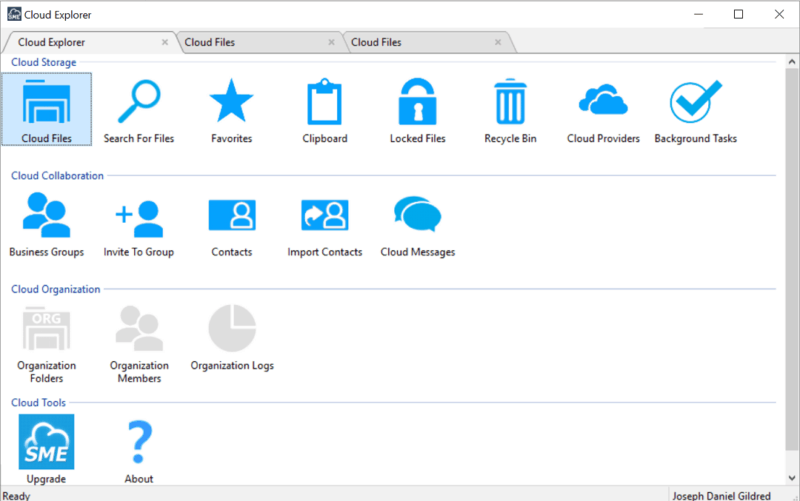
Like the SME website, the tool feels a bit meh in its design. We also ran into a fair amount of lag when working with it, but to be fair we conducted our tests from Bangkok, so that’s not totally unexpected.
We’ll look at the cloud sync feature some more in a bit, along with file sharing.
SME Cloud Drive
SME provides a network drive client for a handful of cloud services, including Amazon S3, Google Cloud, Microsoft Azure and Rackspace. This is something you’ll find offered by a handful of traditional cloud storage providers, like pCloud and its terrific pCloud Drive feature, but not many.
One of the advantages of using a network drive over a traditional sync folder is that for sync to work it needs to store files on your hard drive in addition to the cloud. While you can generally turn sync off for folders, in doing so you’ll no longer be able to access your files through your computer file system.
With a network drive, that’s not the case. Everything is stored in the cloud, but you can browse those files in your file system just as if they were stored locally. It’s a better, more convenient means of saving hard drive space.
CloudDav
While SME’s native cloud drive tools are cool, they’re not available for every cloud service. However, the service also supports WebDAV in an implementation it calls CloudDav, letting you easily setup network drive access to any provider.
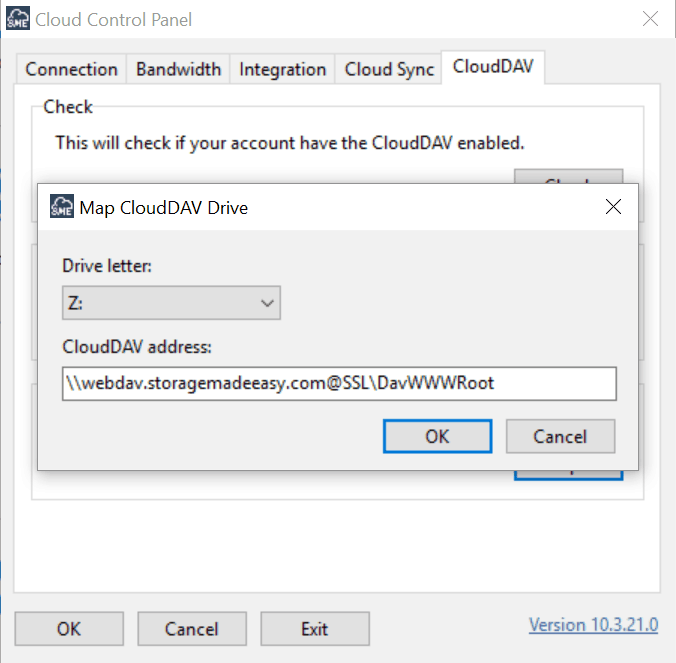
In short, SME lets you work with files in pretty much any way you want, offering far more flexibility than you’ll get from most traditional cloud storage services. The overall look and feel of that suite of tools could use a modern makeover, but that’s only a minor (and somewhat subjective) concern that ultimately doesn’t do much to hinder the overall experience.
File Sharing & Syncing
Up next, we’re going to take a closer look at file sharing and sync, two key features of any self-respecting cloud storage service. You can share content using either the web GUI or desktop client by either generating a URL pointing to the file or folder you want to share or sharing via email.
While link sharing is common, most cloud services skimp on features designed to help you control content. SME doesn’t: you can password protect links, set download limits and set expiry dates after which links will be disabled automatically.
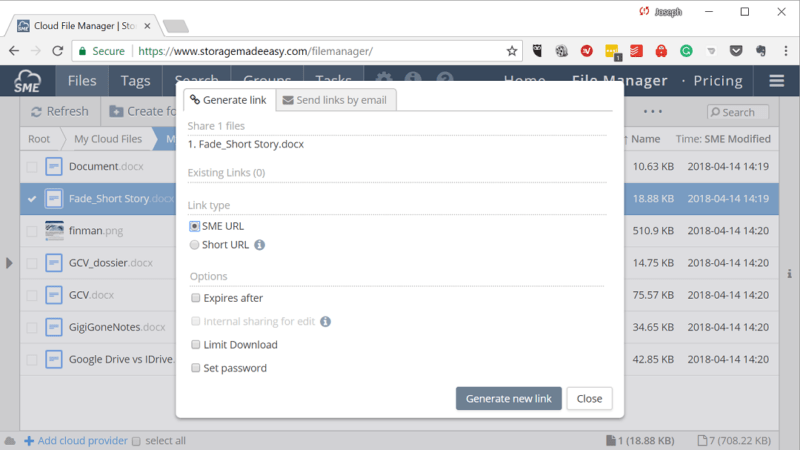
The same options are available when granting file access to specific individuals via their email address. When generating a link share, you can also set it as a “dropfolder,” letting others upload files to your cloud storage space. This is useful for tasks like gathering requirements from clients or work product from freelancers.
For team collaboration, you can create groups to share folders and files with multiple people at once. Individuals invited into a workgroup can be granted upload access to contribute shared files.
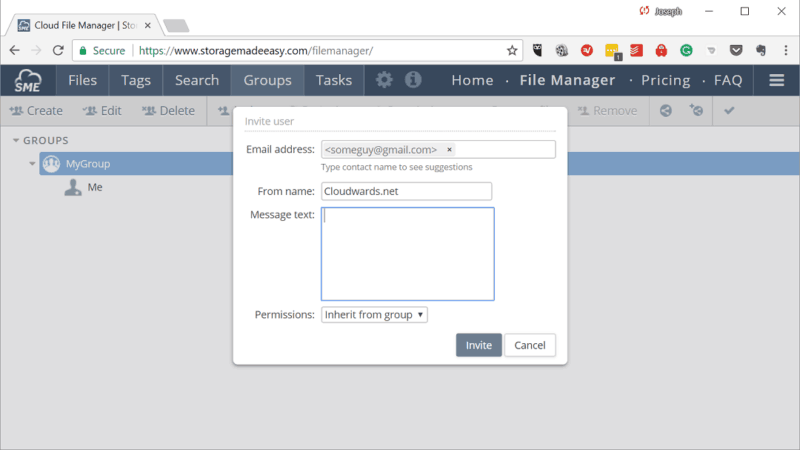
Share folders have customizable settings to let you grant or revoke individual permissions like creating subfolders, uploading files and creating shared links.
Moving on from share features, SME lets you sync folders on your hard drive. As noted, this requires purchasing the Windows cloud tools package for $39.99 (or the corresponding tools for Mac or Linux). Once bought, you can set up sync folders by clicking “cloud sync” under the “cloud tools” header of the client.
From there, you can configure a sync relationship between a folder on your local drive and a folder in the cloud.
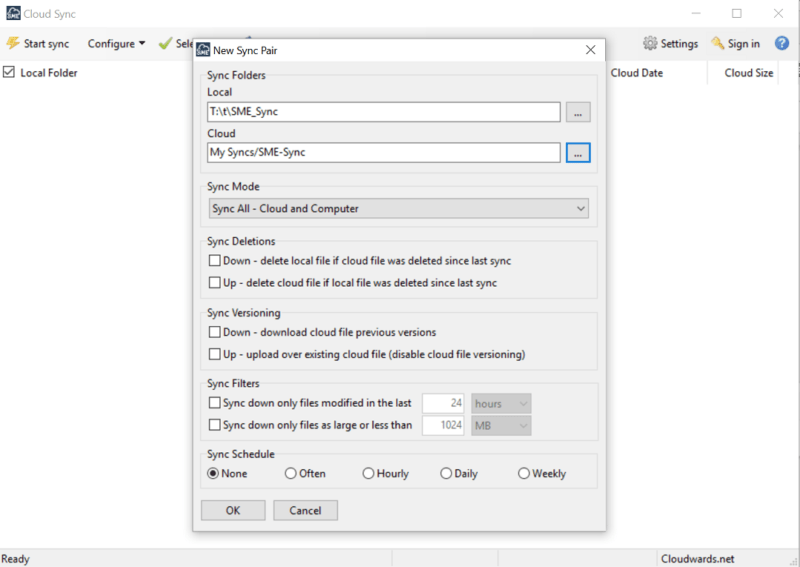
You can also set your retention policy for deleted files and versioning, set a cap on the size of files able to be synced and set your sync schedule. SME also lets you restrict sync to up (computer to the cloud) or down (cloud to computer), rather than the traditional two-way sync street.
You can turn sync off and on for any subfolder in sync folders you set up, effectively providing what’s commonly known as “selective sync” in the cloud storage industry. To do so, just untick the checkbox beside its name in the cloud sync tool.
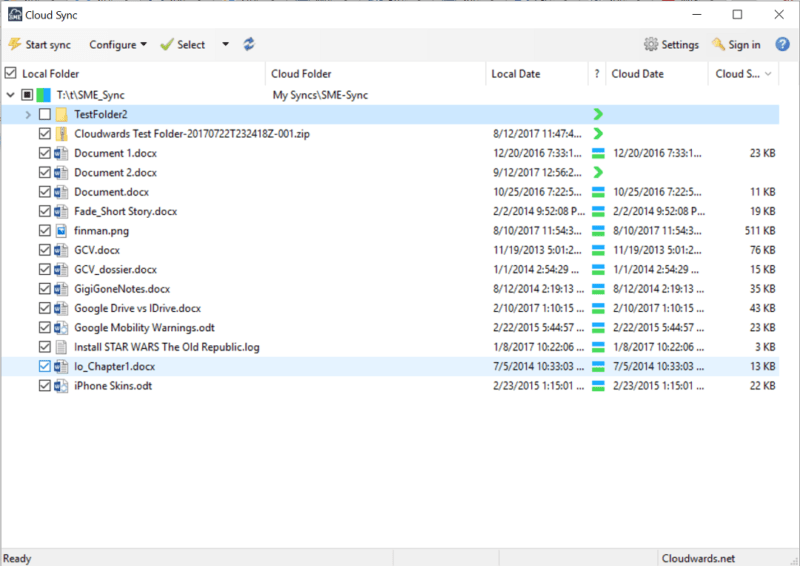
About our only beef with the sync process is that we wish that there was a quick view of sync status available via the taskbar icon. Google Drive, for example, has a popup window showing you ongoing and recently completed syncs.
Speed
Usually, when we conduct reviews of cloud storage services here at Cloudwards.net, we perform a few file upload and download trials to gauge sync speed. With Storage Made Easy, the speed factor is a bit out of the company’s hands since that aspect’s more reliant on the cloud provider you pair the technology with.
Amazon S3, for example, tends to put up great speeds thanks to global infrastructure that helps decrease the distance between your computer and the data center and, more importantly, reduces server congestion. Wasabi, meanwhile, while more affordable, has more limited data center locations, resulting in lower speeds.
That makes it a bit hard to grade SME on sync speed, but given that its ability to pair with over 50 different cloud providers puts the speed factor in your hands, we’re giving it a thumbs up.
Just for giggles, we did conduct a few tests anyway using the 5GB of storage that comes with a license, which as mentioned uses Amazon S3. These tests were conducted from Bangkok, Thailand, using a 1GB test folder. For point of reference, the WiFi connection we used had 12 Mbps upload and 30 Mbps download speeds.
| Test One: | Test Two: | Average: | |
|---|---|---|---|
| Upload: | 18 minutes | 20 minutes | 19 minutes |
| Download: | 5 minutes, 30 seconds | 5 minutes, 30 seconds | 5 minutes, 30 seconds |
Those are good results, in line with what we’d expect for a gigabyte of files sent around the world. That’s a bit slower than similar tests we ran with Dropbox, while a bit faster than OneDrive and Google Drive.
Bear in mind, those are results for full file uploads. A handful of cloud storage providers, notably Dropbox, provide block-level file copying to speed up syncs of files that have been already stored once. That mechanism works by only re-copying the parts of the file that changed (the delta).
Because SME File Fabric doesn’t control the storage itself, its use of block copying would require the cloud service to provide an API mechanism to do delta syncs. That’s pretty uncommon, unfortunately. If you opt for private encryption (see security), that wouldn’t be an option anyway.
By default, SME uses whatever bandwidth is available to sync files. If you want, however, you can throttle upload and download speeds to prevent them from hogging resources. Alternatively, to crank things up, you can set up multithreaded downloads.
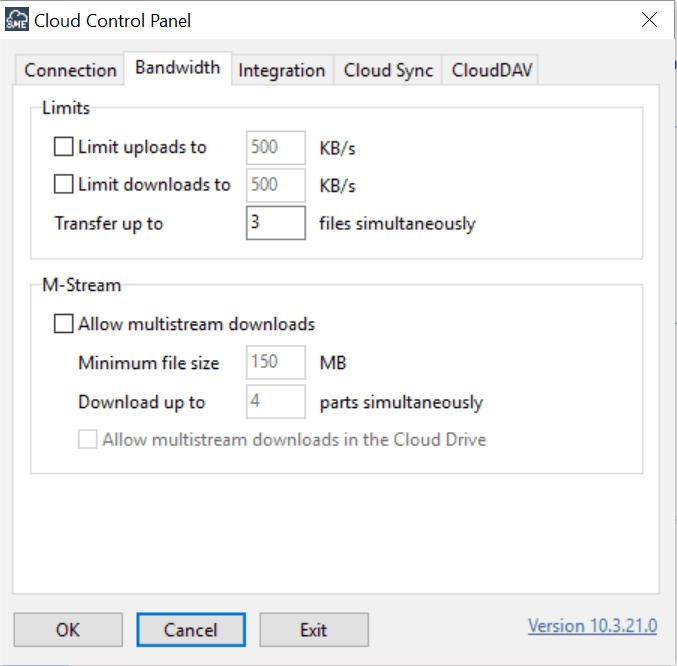
Overall, it’s mostly good news. Again though, your choice of cloud provider is the big factor here.
Security
As with sync speeds, security rests in part on what cloud provider you pair Storage Made Easy with. Different providers have different levels of data center security, including at-rest encryption, so you’re going to want to check with them individually.
However, even if you pair SME with a service that doesn’t encrypt files server-side, the client will let you privately encrypt any files you’re syncing.
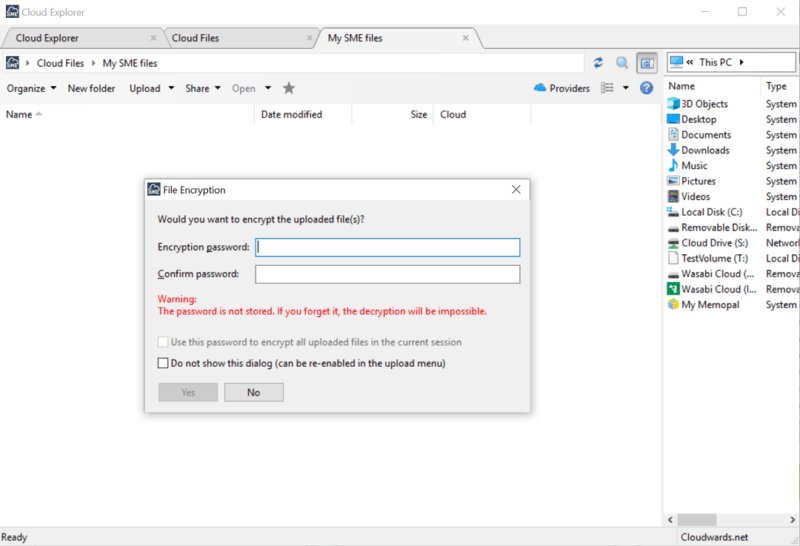
Private encryption, sometimes called zero-knowledge encryption, provides a huge advantage over managed encryption, which is what you’ll get with most mainstream cloud storage services, including Dropbox and Google Drive.
Private encryption means that your files can’t be decrypted by your cloud provider, whether for scanning for copyrighted content or for marketing, or even to hand your files over for government surveillance programs such as every privacy advocate’s favorite punching bag, PRISM.
The method used by SME for private encryption is AES 256, the protocol recommended for use by the U.S. National Institute of Standards and Technology (NIST) and used by most cloud services, financial institutes and military organizations.
The downside to private encryption is that because SME doesn’t keep a record of your encryption keys if you forget your encryption password you lose access to your files. Also, upload and download speeds take a hit over unencrypted files.
For Storage Made Easy business subscribers, there’s also an account-level encryption option that encrypts all team files at rest. In that case, the encryption key is managed by SME, so it’s a bit less secure, though you don’t run into the lost password problem. Note that when team encryption is turned on, the option for personal, private encryption is disabled.
SME also provides a 2FA option, which prevents stolen passwords from being easily used to access your storage. With 2FA flipped on, logging in from an unfamiliar machine will require an additional credential in the form of a code. This code can be delivered to your mobile device as a text or you can use Google Authenticator.
Support
Storage Made Easy provides several means of contact, including live chat with sales and email for technical help. Skype support is also available should your issue require it.
Hours for direct support, unfortunately, are a bit limited: they run from 10 a.m. to 4 p.m., Monday through Friday, London time. We shot a couple of emails to technical support to gauge response time and received responses back the same business day. The team at SME really know their stuff and provide friendly help, though it isn’t a very big team.
If you don’t want to wait for support or need help during off hours, you can access the SME wiki or FAQ page to try and find answers there. The wiki resource, in particular, is nicely done, with plenty of articles and a search feature to find relevant material more quickly.
There’s also an SME forum you can use, though it doesn’t seem very active.
Final Thoughts
Overall, we were impressed with Storage Made Easy during our inaugural review of the service. We love the ability to pair SME with a broad range of cloud services like Rackspace and Amazon S3. Key capabilities like file sharing and sync are nicely done thanks to uncommon features such as link passwords and private encryption.
The desktop and web clients, as we mentioned, don’t have the same polish as some members of the best cloud storage club, but most of the features we look for are there, along with network drive clients, WebDAV support, FTP support and some other useful tools.
All in all, Storage Made Easy is a more secure and capable solution than Dropbox and many of the common Dropbox alternatives. We even skipped over a few things for brevity, including governance tools for business users that helps SME compare favorably with the best EFSS tools.
Of course, we’d love to hear your thoughts on Storage Made Easy, too. Let us know what you think in the comments below, and thanks for reading.



